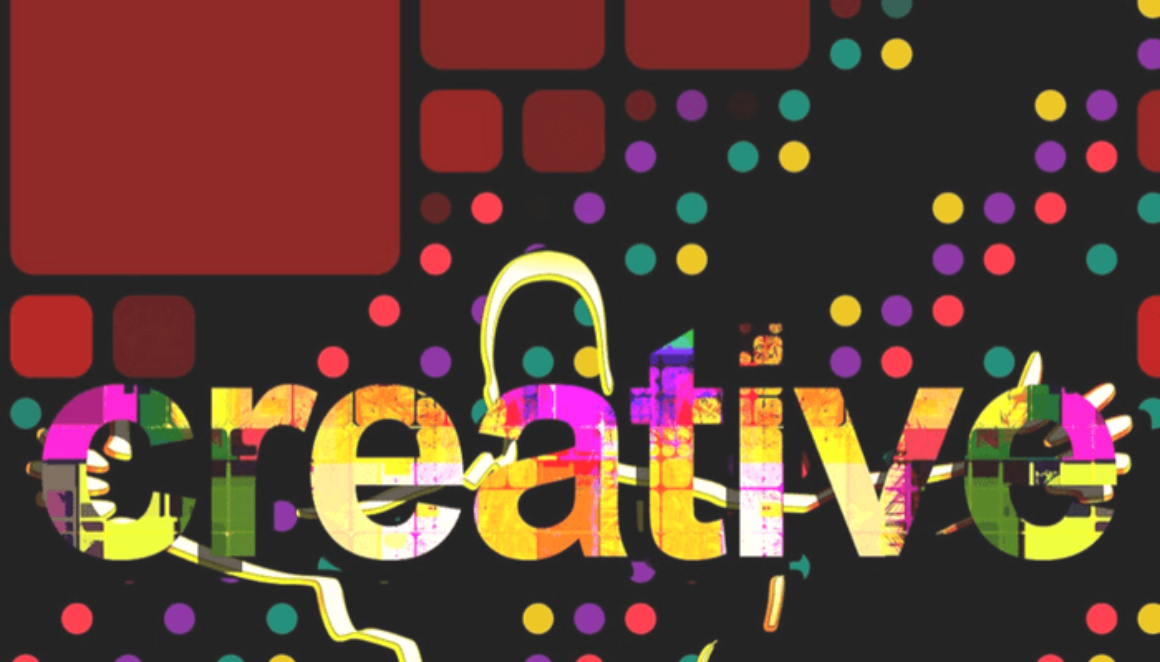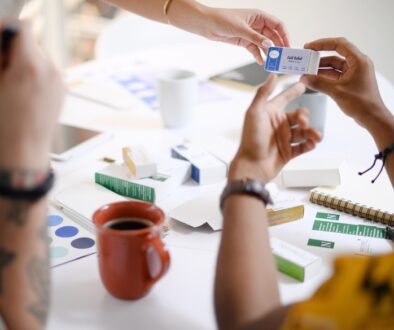How To Be Creative When You’re Feeling Uninspired
1. Change Your Environment
The very first thing I do when I feel uninspired is to change my physical environment. While routine can be a great thing for personal productivity, sometimes it can kill your creative spirit. You get too used to the way things are and need a change to spark new thoughts and ideas.
If that doesn’t work, maybe it’s your office space itself. Even the noise levels can influence your creativity. A study from Juliet Zhu found that a moderate noise level provides just enough distraction to encourage creative thought. Find a few different spaces that work for you, and change your environment when needed.
2. Take A Walk
Stanford researchers have found that walking improves creativity. On average, creative thinking increases by 60% when there is walking involved. Not only does inspiration form while walking, but then it continues to come even after you return to your desk.
3. Make Something For Play
Think back to some of your most creative years in life. Most of us think back to our early elementary years. At the age of five, you’re at 80% of our creative potential as you’re inventing all the time.
Remember the finger painting, drawing, snowmen building, tree forts, and everything else? The only difference between then and now is that back then you allowed yourself to just play. There was no plan, no set goals, just an idea and the freedom to make whatever you wanted.
Give yourself room to play. Just do it. I promise you won’t regret it.
4. Try Something New
Lately when I hit a creative road block, I find a new hobby to pursue in order to give my creative thinking a new perspective. For me as a graphic designer, that means playing with watercolors, hand lettering, woodworking, video, and other forms of creative mediums that I wouldn’t consider myself to be a pro at.
For you, it might mean writing a short story, cooking a new recipe, or going to a new class on the weekends. Do something new to not only grow your creative background but to give a refreshing break to your usual practice.
5. Take A Trip
Maybe it’s not enough to change rooms or even change buildings for that matter. Maybe you just need a trip out of town to be around a new culture. Take a trip with some friends and enjoy your time together.
“New sounds, smells, language, tastes, sensations, and sights spark different synapses in the brain,” according to a study done by Adam Galinsky. Even new experiences that are totally unrelated to creativity can bring new ideas and perspectives when you return to the office. Designer Stefan Sagmeister closes his studio once every seven years to do just that.
6. Have A Mentor
Creative mentors are some of the best mentors. Mentors can range from a friend, a hero in the industry, or to someone else at your workplace. Mentors are there to listen to the problem at hand and lend their expertise to help you move forward.
They can also introduce you to others that might be able to help you, making for awesome new connections and further expert advice. After all, networking is critical to finding a job you love—and one you could possibly be even more creative in.
7. Read A Book
Start with this awesome list of creative books. Find a book that’s interesting to you and learn through another’s story. You may even find blog ideas from reading.
8. Listen To A Podcast
There’s a podcast for almost anything. Podcasts are great for car rides, but also for a music replacement while you work. Instead of listening to your favorite music stream, check out a podcast that will bring new insight as you work.
9. Collect Creative Sites
While Pinterest is arguably the world’s largest inspiration site, there are several other places that may suite your industry best. For designers like me, that’s Dribble or Behance. For you, that might mean TechCrunch, Mashable, or Convince and Convert.
Whatever you enjoy, find those key sites that you can bookmark and refer to for creative reminders when you hit your creative road block.
10. Collaborate With Other Awesome People
When we hit a problem, most of us try to solve it ourselves. But sometimes the solution will only be found when you talk it out with someone else.
The answer might be at the tip of your tongue or in the back of your mind, but without speaking through the problem, the solution will be left buried in our internal thoughts. 99u found some awesome facts about collaborating together that can seriously boost your creativity. Find someone nearby, talk it out, and collaborate on finding a solution.
11. Look To History
There’s a reason that history is remembered. What once was important or imaginative, might very well be the key to what you need to move forward.
Ask yourself:
- Has someone else created something similar?
- Have there been similar stories written?
Look back at what those before us have accomplished to see if their process can help you with yours. You don’t need to reinvent the wheel, you just need to make it better.
12. Borrow Ideas
Let me repeat, borrow ideas, not copy. As French author François-René de Chateaubriand wrote, “The original writer is not he who refrains from imitating others, but he who can be imitated by none.”
Sometimes you just need to start somewhere, look to what you know, and then see how you can make it better. Even Steve Jobs started with the idea of the personal computer from a Xerox prototype and then ran with it.
13. Start An Inspiration File
“Your job is to collect good ideas. The more good ideas you collect, the more you can choose from to be influenced by.” That’s what Austin Kleon said in his awesome book, Steal Like an Artist: 10 Things Nobody Told You About Being Creative.
And it’s true!
Collect as many ideas as you possibly can so that you can use them as a reference later on. This might take shape in a Pinterest Board, Evernote folder, or physical collection of clips and snippets. But any way you do this, it’s incredibly important to start collecting now. Start now, and watch it grow.
Bonus: Use the Evernote Web Clipper directly with CoSchedule to collect ideas!
14. Sleep On It
Salvador Dalí once said, “All of my best ideas come through my dreams.”
Whether to get inspiration from your dreams or to simply take a break and clear you mind, having a good night’s rest can be key to creativity. Believe it or not, we need to have a balanced life outside of work so that when it comes time to think, we’re fully prepared both mentally and physically.
Eat well, exercise, and get some sleep.
15. Embrace Constraints
Theodor Seuss Geisel, a.k.a. Dr. Seuss, was challenged by his publisher to write a book using only 50 words. Green Eggs and Ham was the result.
Today, we can fall into creative fatigue not because there’s not enough choices out there, but because there’s just too many! Try to limit yourself in some shape, way, or form to challenge the way in which you’re thinking.
50 words was quite a limitation for Dr. Seuss, but that very limitation made a masterpiece! New connections will be formed when the clutter of choices is eliminated.
16. Make Mistakes
Not only can you make mistakes, but I’m giving you permission! Please, by all means, make mistakes. If you aren’t taking risks, then you aren’t making mistakes, which means you’ll never reach that new awesome idea that you’ve been waiting for.
Do I need to remind you of all our heroes who failed before they found their success? Make mistakes, fail, fail fast, and then keep going.
17. Combine Opposites
“Creativity is just connecting things,” Steve Jobs said. If connecting familiar ideas isn’t working, try connecting opposite or unrelated ones.
This is often the equation comedians use for humor, and if it works for them, why not you? Some of the most successful ad campaigns I’ve ever seen have been made possible by connecting an unrelated emotion or story to the one they’re trying to convey. Opposites can be very powerful, so try them out.
18. Keep An Ideas Notebook
Take a notebook with you on your morning commute and start sketching. Fill it with quotes, doodles, a record of what you did that day. Write a story!
Let this notebook be your place to play and relax while on your trip to and from work. Athletes use this similar ‘warm up and cool down’ approach in their daily workouts. To heighten your creativity, treat this notebook like your personal workout. Warm up with sketches on your way to work, and cool down with doodles on your way home.
And remember, don’t overthink it. Just let your mind wander and play. An idea notebook will really show you how to be creative throughout daily life.
19. Ask New Questions
Sometimes, we can hit a creative road block simply because we’re asking the wrong question or not asking any questions at all.
When we assume we know how to solve the problem, we ignore the several other possibilities that could be the idea we’re looking for. Instead of taking the assumed, common approach, start by asking questions and let that direct you to your creative inspiration.
20. Do Nothing
Austin Kleon believes, “Creative people need time to just sit around and do nothing.”
Yep, that’s right. Take some time to do nothing, nothing at all. Every task at hand needs a break, no matter how great it might be. Relax, enjoy yourself, and come back to it later. Time away might be exactly what you need in order to come back completely restored and inspired.
Now You Know How To Be Creative When The Inspiration Just Isn’t Coming
There you have it! 20 different ways on how to be creative when you feel absolutely stuck.
As Austin Kleon says, “It takes a lot of energy to be creative.” We need to not only protect our energy, but use it well.
Whether it’s sketching on your commute, taking a trip with friends, giving yourself permission to play, or doing absolutely nothing—try out different ways to find inspiration and see what works best for you. What works today might not work tomorrow, so keep your creative mind alive and open to new possibilities.
Source: Coschedule.com




